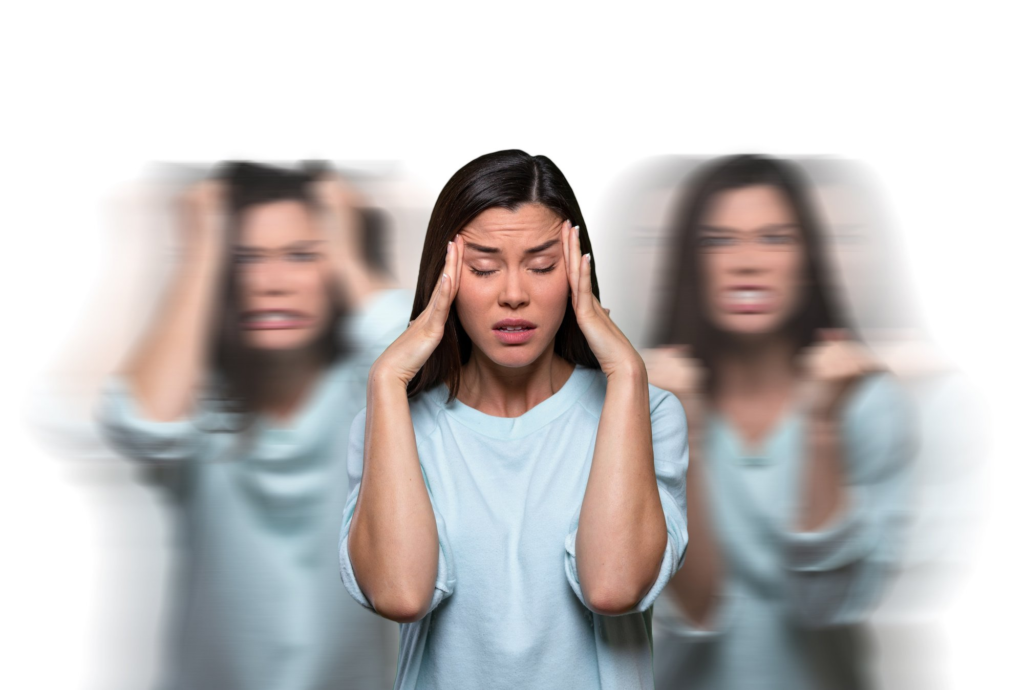Do you or someone you know went through Attention-Deficit/Hyperactivity Disorder (ADHD)? Emotional dysregulation often gets overseen, because there is a prevalence of focus on attention, hyperactivity, and impulsivity. Human emotion regulation disorder, or emotional dysregulation, is the inability to control emotions in ADHD patients. Meanwhile, it is much more complicated than that because, apart from mood swings and changes in emotions, daily living. As well as overall well-being, would also suffer a negative impact. The significance of going deeply into the investigation of the ADHD and emotional dysfunction connection is unambiguously clear to everyone. The provision of this key is the epiphany of releasing the emotional pain which, eventually leads to the transformation of emotional wellbeing into quality of life.
With us, find out how emotional dysregulation underlines ADHD. Let’s explore the ways of achieving mental stability, dealing with life’s challenges, and succeeding with ADHD. You can find more information about diganosis here.

Link Between ADHD and Emotional Dysregulation
ADHD is a neurodevelopmental disorder, which is known to differ in brain structure and function, particularly in the regions responsible for focusing, inhibiting own impulses, and emotion regulation. Research indicates that those who have ADHD might also have problems with executive functions. Which are expertise in emotion regulation, making good decisions, and inhibiting impulsive acts. Therefore, the inability to regulate emotions is exacerbated by the onset of these deficits.
Emotional Dysregulation in ADHD Manifests In Various Ways

Intense Emotional Reactions
Could it be that someone who is experiencing ADHD will have more severe emotions about things that seem to be minor in another person’s eyes? These emotions might be so sudden and overwhelming like fury, anger, frustration, and more. These reactions can sometimes seem too much for the current problem at hand and can be a problem for social relations and daily life functioning.
Mood Swings
The mood swings in ADHD can be very quickly rapid and involve emotional dysregulation where one may pass through a successive state of emotions apparently without any connection whatsoever. Mood swings may lead to interferences with day-to-day activities and the way we interact with people. These fluctuations, in general, are rather short-term and difficult to handle, which makes it problematic to be emotionally stable and to concentrate on tasks or conversations.
Difficulty Coping with Stress
It is not easy to deal with stress for people who have ADHD as they easily lose control over their emotions. ADHD is a condition that makes it harder to manage stressful situations which normally makes other people anxious yet those with the disorder will still have anxiety and emotional turmoil. This increased vulnerability to stressors. Therefore, causes the feeling of overload and more often results in the inability to complete tasks or to concentrate.
Impulsivity in Emotional Expression
Also, behavior of ADHD is manifested in a trait called compulsivity. In the case of ADHD, bottling up the feelings and expression of them during social situations in a disrespectful way may lead to arguing in public or having explosive arguments. Emotional impulsivity in their expression can strain relations and hold social consequences as individuals experience difficulties in social situations where they are called upon to regulate their emotions adequately.
Emotional Sensitivity
The ADHD sufferer might display an augmented emotional sensitivity to the strength of the surroundings and different feelings. This kind of person can be more easily damaged by the vividness of the environment than someone who is a non-sufferer. The strengthened vigilance as an incremental dysregulation of emotions and stabilization of emotional responses can be a challenge. Increased emotional hypersensitivity may lead to a person getting emotionally overwhelmed by stimuli that others would not perceive as distressing. As a result, emotional self-regulation is further aggravated and makes it harder to cope with day-to-day tasks and social interactions.
Strategies for Coping with Emotional Dysregulation in ADHD

Psychoeducation
The psychoeducation of coping with emotional dysregulation is based on psychoeducation in ADHD. Besides the knowledge about ADHD symptoms, people also need to be aware of the emotions and relationships between the symptoms. In psychoeducation, an individual learns that the neurobiology of ADHD plays a key role in causing difficulties in emotional regulation. Through this also they get the knowledge about how imbalance emotionality affects relationships, performance in study or profession, and general health. By realizing the connections between ADHD and the such we can become more effective in the use of coping strategies.
Cognitive-Behavioral Therapy (CBT)
Cognitive-Behavioral Therapy (CBT) is a structured type of psychotherapy that has proven effective in dealing with the emotional dysregulation that people with Attention deficit/hyperactivity disorder (ADHD) often face. In situations of emotional dysregulation, CBT is going to identify and change the habits, that cause emotional unsteadiness. With the help of CBT techniques, people learn to detect the ones and reasonings that develop emotional dyscontrol. They are taught coping skills involving how to change and reframe those thoughts to get more productive emotional reactions. Furthermore, the CBT method helps people create strategies to control impulsivity and take pauses before showing emotion.
Mindfulness and Meditation
Mindfulness meditation and deep breathing techniques are some of the strategies that help people with ADHD to improve their emotional regulation. Through this practice of becoming moment-to-moment aware, in mindfulness techniques. People learn to witness their thoughts and emotions free of any judgment or reactivity. This non-partisan acceptance enables people to switch off habitual emotional responses and pick more suitable reactions instead. People practicing mindfulness regularly enhance their capacity for attentional control and emotional robustness. This makes them react less frequently and less strongly to emotional dysregulation episodes. What is more, mindfulness-based techniques teach individuals how to stay anchored in the current state, hence allowing them to disconnect from the feeling of running the past and worrying about the future which could increase the emotional turmoil.
Emotion Regulation Strategies
Emotional control techniques allow persons with ADHD to have concrete methods of immediate regulation of their emotions. Cognitive reappraisal implies reconsidering how one perceives a particular situation with the purpose of altering its emotional importance. By refuting one-sided interpretations and adopting balanced perceptions, an individual has the ability to restrain emotional troubles. Emotion labeling makes people who feel it recognize and specify their emotions as they appear. Thus making them more aware of feelings and enabling emotional regulation. Behavioral activation targets specific activities that are responsible for generating and maintaining positive emotions and emotions of well-being in order to break the cycle of negative emotions. These strategies give individuals a new source of power to dictate their emotional experiences and adjust to the stressors in their lives positively and effectively. Learn how to manage emotions effectively with ADHD.
Stress Management Techniques
Stress management skills allow individuals with ADHD to stay steady and in charge while handling emotional problems. The use of time management techniques enables people to differentiate their tasks by importance with a view of allocating their resources more properly so as to not overburden themselves. Self-relaxation techniques, including progressive muscle relaxation and guided imagery. Physiologically induce relaxation responses that in turn relieve physical stress and tension. Develop the ability of people to deal with stressors in a systematic way by teaching them problem-solving skills, as they break every problem into small steps and finally find the best solutions to them.
Exercise and Physical Activity
Regular physical exercise can be demonstrated that it can improve mood regulation and stress reduction for people with ADHD. The exercise is known to release endorphins (the naturally produced mood elevators) thereby dissipating the pent-up anxiety and frustration. Furthermore, engaging in physical activities helps to increase the body’s production of neurotransmitters such as dopamine and norepinephrine which are critical in regard to attention and executive functioning, facilitating the management of ADHD symptoms. Participating in exercises like jogging, yoga, or team sports can be very effective activities in letting out excess energy and improving one’s mood. Moreover, outdoor activities deliver an interaction with nature and it has been proven to create a positive mood and reduce stress.
Creative Outlets
Taking part in creative activities like art, music or writing can well be a source of emotional relief as they provide a means to express feelings and relieve stress. Creative expressions are means through which people switch their feelings and thoughts into things they can hold. Which gives them a sense of release from their emotional burden. The acts of simply engaging in activities such as hobbies or artistic endeavors contribute to the establishment of a feeling of achievement and individuality that, in the end, increases self-esteem and resilience in times of emotional difficulties. Not only does creation activate different areas of the brain for cognitive flexibility and problem-solving, but it also enhances our capacity for innovation and adaptation.
Conclusion
Emotional dysregulation present among people with ADHD strengthens the need for incorporating emotional well-being elements in the management of ADHD. Through the comprehension of the link between ADHD and emotional dysregulation and by applying relevant coping strategies, people with ADHD can build up emotional resilience, enhance their interpersonal relationships, and have a more fulfilling life. A comprehensive approach that combines psychotherapy, medication management, and lifestyle interventions can equip people with ADHD to more efficiently manage their emotions and excel in each of the life domains they will encounter. For more insights on managing ADHD and emotional dysregulation, visit Zita Chriszto’s homepage.
